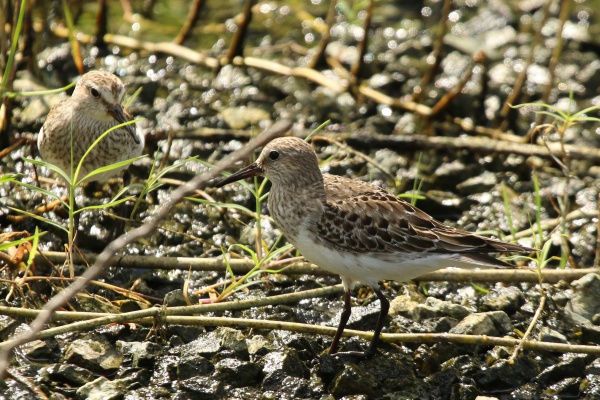Facts About White-rumped sandpiper
The white-rumped sandpiper is a small, intriguing shorebird that inhabits the northern tundras of Canada and Alaska. This bird belongs to a group affectionately known as "peeps" or "stints" making it challenging to differentiate from its relatives. These birds are elusive and often out of sight during the summer due to their breeding in remote locations, and in the winter, they migrate far to the south. You are most likely to spot them during their spring or fall migrations near bodies of water in temperate regions.
In the realm of avian classification, the white-rumped sandpiper belongs to the class Aves, order Charadriiformes, family Scolopacidae, and genus Calidris. It is a monotypic species, meaning it is the sole species in its genus. The bird's name has roots in Ancient Greek and Latin, alluding to its dusky coloration.
In terms of appearance, this sandpiper is small, adorned with grey-brown feathers, a white eye stripe, and, as its name suggests, a distinctive white rump. It can be easily confused with other similar sandpipers. Their plumage changes slightly depending on the season and their age.
These birds have specific habitat preferences. During the breeding season, they prefer vegetated areas in the tundra. During migration, they seek various wetlands but avoid sandy beaches and fast-moving waters. They are incredible long-distance travelers, migrating to southern South America for the winter after breeding in northern Canada and Alaska.
Their diet primarily consists of small invertebrates, though they also consume seeds. They forage by probing into mud or shallow waters. Females build cup-shaped nests hidden in vegetation, while males focus on defending the territory. Their courtship involves impressive aerial displays, with females primarily incubating the eggs.
Climate change is beginning to influence their habitat, affecting their distribution. The white-rumped sandpiper's calls are quite distinctive. After hatching, the young leave the nest quickly and become independent within approximately 16-17 days.

 Bolivia
Bolivia